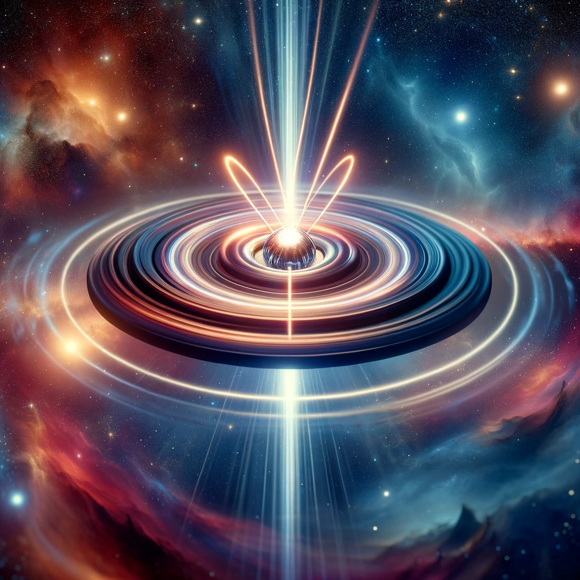Scattered throughout the vast expanse of the cosmos lie celestial lighthouses, pulsars, rapidly rotating neutron stars that emit beams of radiation with clockwork precision. These cosmic timekeepers, born from the fiery collapse of massive stars, offer a unique perspective on the universe, providing insights into its fundamental workings and the nature of time itself.
Pulsars, with their ultra-stable rotational periods, serve as cosmic metronomes, their precise ticks and tocks providing a yardstick for measuring the passage of time. Astronomers, by monitoring these pulsars, can detect minute changes in their rotational rates, revealing subtle distortions in the fabric of spacetime caused by the presence of massive objects like black holes and neutron stars.
The study of pulsars has revolutionized our understanding of gravity, providing evidence for the existence of gravitational waves, ripples in spacetime predicted by Einstein’s theory of general relativity. These elusive waves, first detected directly in 2015, have opened up a new window on the universe, allowing us to probe the violent mergers of black holes and neutron stars and to peer into the very depths of spacetime.
But pulsars are not just passive timekeepers; they are also active participants in the cosmic drama. Their powerful beams of radiation can sweep across our telescopes, producing a rhythmic ticking sound that resembles a celestial heartbeat. This ticking, known as pulsar timing, has been used to make some of the most precise measurements of time ever achieved, surpassing even the best atomic clocks on Earth.
The incredible precision of pulsar timing has allowed astronomers to detect minuscule variations in the Earth’s rotation rate, revealing subtle changes in the length of a day. These variations, caused by factors such as the redistribution of mass within the Earth and the influence of the oceans and atmosphere, provide valuable insights into our planet’s dynamics and its interaction with the cosmos.
Pulsars have also been used to probe the structure of the interstellar medium, the gas and dust that fills the spaces between stars. As pulsar beams travel through this material, they are scattered and delayed, providing astronomers with a means of mapping the distribution and properties of the interstellar medium. This information is crucial for understanding the formation of stars and planets and for studying the evolution of galaxies.
Beyond their scientific applications, pulsars have also captured the imagination of science fiction writers and artists, inspiring stories of alien civilizations and time travel. Their enigmatic nature and their connection to the fundamental laws of physics have made them a symbol of the universe’s mysteries and the endless possibilities of scientific discovery.
As we continue to study pulsars, we can expect to uncover even more of their secrets. New generations of telescopes and instruments will allow us to probe their environments with unprecedented detail, revealing the intricate processes that govern their formation and evolution. And with each new discovery, we gain a deeper appreciation for the profound connection between these cosmic timekeepers and the very fabric of our universe.
Pulsars, these celestial lighthouses that pulse with rhythmic precision, are not just celestial oddities; they are powerful tools for probing the cosmos and unlocking the secrets of time itself. Their study has revolutionized our understanding of gravity, provided evidence for the existence of gravitational waves, and allowed us to make some of the most precise measurements of time ever achieved. As we continue to explore these cosmic timekeepers, we venture further into the realm of the unknown, guided by the ticking of their celestial clocks.





